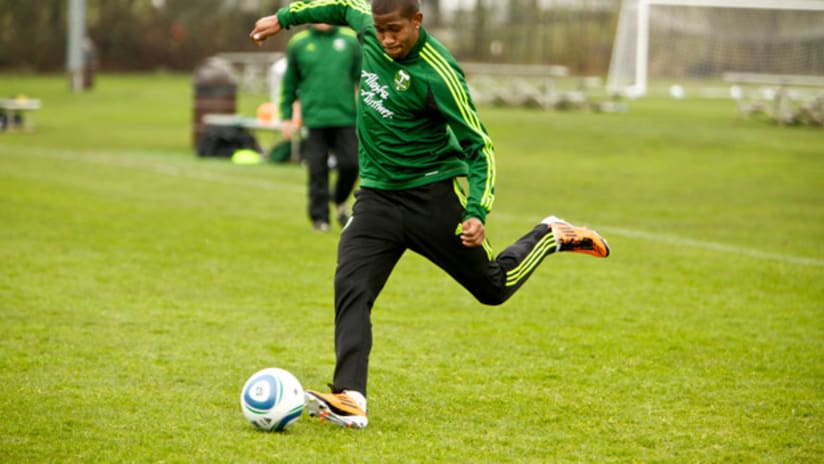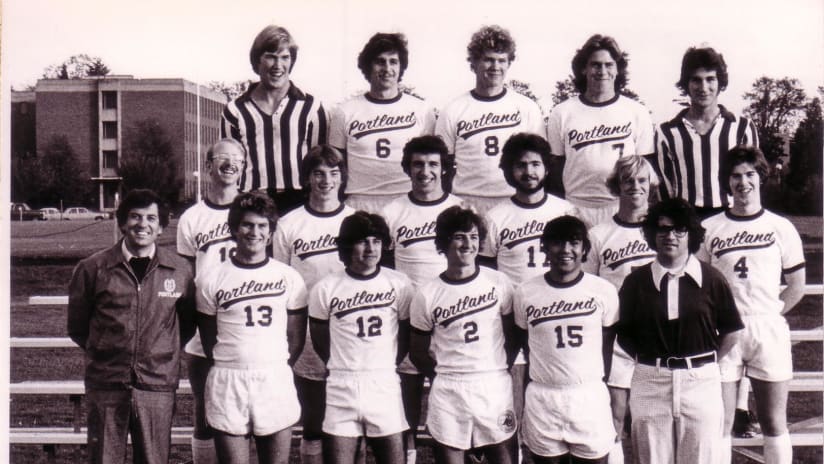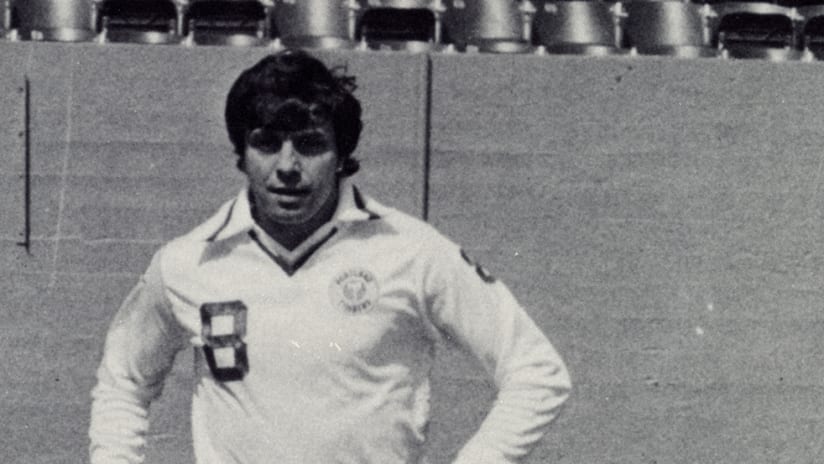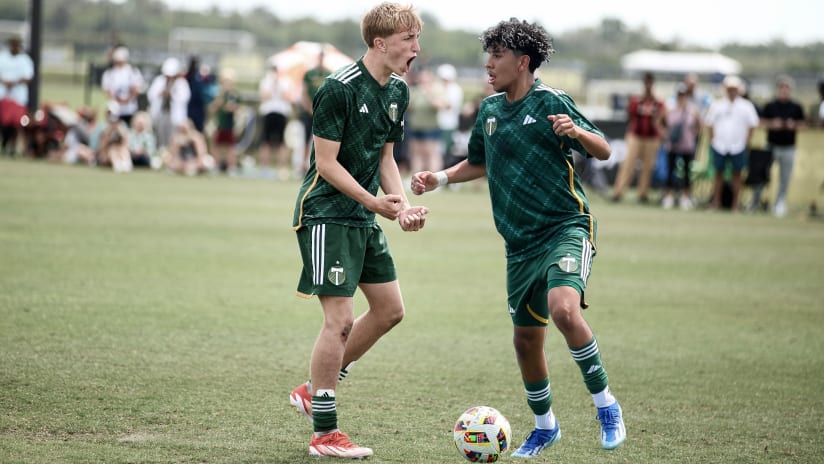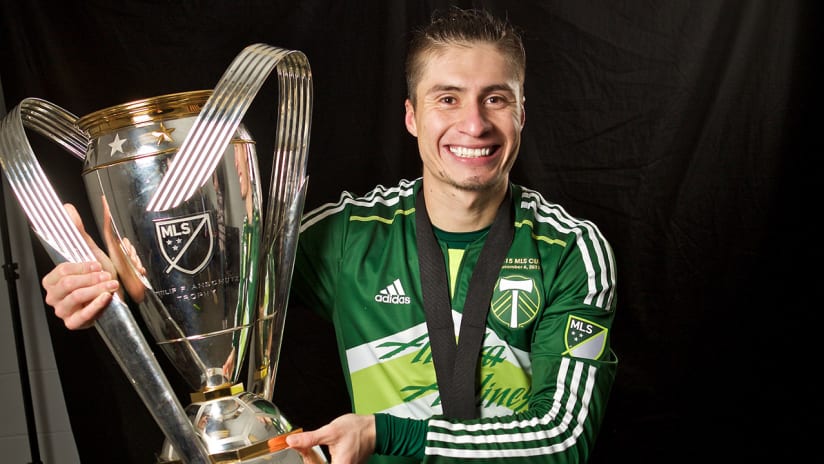Toronto FC were the Seattle Sounders before Seattle was the Seattle Sounders: an expansion team in 2007, given to a city with a multi-cultural soccer-watching base (though which had never supported its USL team with much effort), and they exploded onto the scene with sold out games, a raucous atmosphere, and one of the best supporters groups in MLS. The only problem is, they never backed up the off-field success with much on the field. Now entering their fifth season, Toronto are yet to make the playoffs (though have come close twice), and are impressively on their sixth coach in those five years.
Dutch manager Aron Winter, the latest in a long line of men charged with turning things around for the Reds, is attempting to install a system that is second-nature to his countrymen, but which is a stark departure from the way most MLS teams play. Firstly, his 4-3-3 formation provides more open space and resources to the attack than the traditional 4-4-2, though the two-man defensive base of their midfield triangle can sit in close to the back line and clog things up just as effectively as a good ole’ 4-5-1.
Second is the idea of “Total Football”; introduced to the world in the 1970s, and practiced by the Dutch national team Winter played for who won the 1988 European Championship, it again is a departure from not just most tactical systems in soccer, but most American sports. It’s possession based, predicated on short passing, and keeping the ball on the ground. Also, while most of our games have very regimented positions on the field (both in where they stand and what they’re supposed to be doing), the idea behind the Dutch philosophy is to have players popping up all over the field as the game dictates, and filling in for their teammates as needed.
Suffice to say, it’s a work in progress for Toronto FC. In their opening day loss to the Vancouver Whitecaps, they enjoyed two-thirds of the total possession, and had far better passing accuracy than the Whitecaps, but just in case a 4-2 scoreline isn’t obvious enough, there were many problems which the Timbers will try to exploit Saturday. Let’s look at three areas in particular that I’ll be watching closely during our broadcast:
Attacking from the wings
Timbers fans who followed the team closely last year, and in particular the end of the season, will know about Whitecaps midfielder Davide Chiumiento. Toronto fans found out about him last week. The diminutive but creative Swissman ran riot on the right side, creating his team’s first two goals.
The reasons were twofold: one, left back Adrian Cann is a natural center back, and some have suggested his abrupt position change was punishment for storming out of preseason camp in a contract dispute. Cann struggled all game to keep up with Chiumiento’s pace and skill on the outside, getting sucked into the middle (and caught ball-watching) on the Whitecaps opening goal.
Second, Toronto’s formation provides for a three-man midfield, but it’s a very narrow triangle in the center. If defensive midfielders Jacob Peterson and Nathan Sturgis are staying too central, and the outside forwards don’t track back (as they didn’t last week), there are acres of open space on the wings. It’s up to Jeremy Hall and Ryan Pore/Sal Zizzo to be aggressive in those areas, even accepting for the inevitable adjustments Winter will make to shore that up.
Building up from the back – to a hilarious degree
You’ll hear about this concept often in soccer, usually from those who turn up their nose at teams who play a direct (i.e. long ball) style. That’s all well and good, the idea of creating attacks that start with short passes from the defense up to the midfielders, but on Saturday Toronto took it amazingly further. Pretty much every goal kick was rolled out to the corner of their defensive third, where a defender would then try to link up with teammates (or give it back to the goalkeeper, Stefan Frei).
You’ve already seen this year that Timbers coach John Spencer wants his team to pressure their opponents high up the field (when the moment is right, of course), so it’s not a shock then that they spent a lot of time in practice this week having their “scout team” imitate Toronto’s goal kick routine, while the “first team” pressed high and tried to create turnovers. If Portland can exploit that area of the game, and win the ball in their attacking third, watch out. If Toronto can either withstand that pressure (almost like breaking a full-court press in basketball), or change it up with long balls over the top of a defensive line that will be sitting at about midfield…well, watch out.
Winning the aerial game
I’m not quite as dead certain on this last part, but it’s something that stood out to me while watching tape of that match during the week. As I said, Toronto took almost all of their goal kicks short, eschewing the chance to play long in the air and have a midfielder or forward control or flick on the ball with his head. Vancouver, on the other hand, scored two of their goals on movements that started by them controlling their own goal kicks in midfield.
Vancouver had a hilarious 12-1 advantage in corner kicks, scoring on one in the second half. They also had a wide open header saved on a first half attacking free kick, and looked generally dangerous on set pieces. Granted, there was some tremendously bad marking involved, as well as a repeated pattern of red shirts filling up the area around the ball without being able to actually clear it, but I’m getting at something else here.
It just seemed to me that Toronto lost out on most of the battles when Vancouver put the ball in the air, and Toronto themselves tried to avoid getting the ball airborne as much as possible. Knowing as we do that the Timbers have some good size on the field, this might be an area of the game they can create a real advantage in.
These points aside, this will be far from an easy game. Toronto, like Portland, had their egos bruised in the opening day loss, and will be looking to take that pain out on their next opponent. Toronto, like Portland, wants to show everyone else that the version of themselves who played last Saturday wasn’t the real thing. However, Toronto, unlike Portland, will have a fired-up, angry, and loud home-opener crowd behind them (plus will be more acclimated to the sub-freezing temperatures the game will be played in).
If the Timbers can clean up the individual defensive mistakes that plagued them last week; if they can be more creative and positive when they do have the ball, as coach Spencer barked at them throughout training this week (no more hesitating on a chance to cross from the wing, looking for a better option to present itself); and if they can keep the individual brilliance of Toronto’s Dwayne De Rosario (I’m looking at you, central midfield) and Maicon Santos (I’m looking at you center backs, and you’d better step up on him because he scored on a bomb from 20 yards last week), we may just be celebrating their first ever MLS win by Saturday afternoon in the Rose City.

